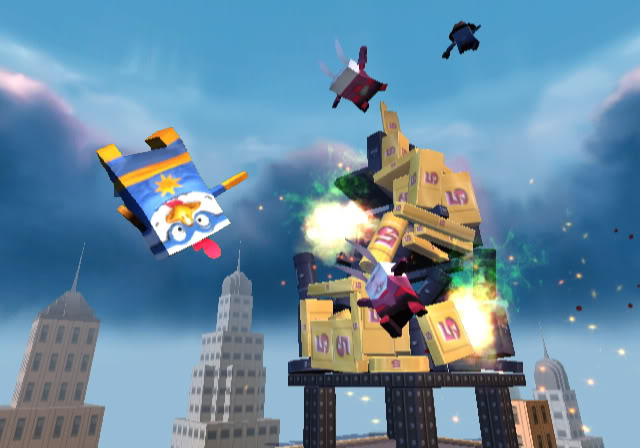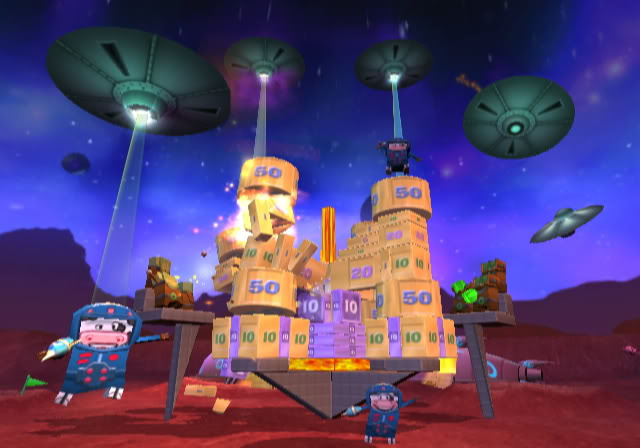This post has not been edited by the GamesBeat staff. Opinions by GamesBeat community writers do not necessarily reflect those of the staff.
I’m twenty-one years old. At my age, I’m able to relish the benefits of adulthood before the troubles catch up with me. Though I don’t fully consider myself an adult yet, I can legally flex my maturity by casting a ballot during an election or buying alcohol at the store.
Adults have the opportunity to celebrate growing up every day, but children aren’t so lucky. Kids rarely feel mature or wizened.
From what I remember, the few times that I felt “older” as a kid were passing a grade in elementary school, seeing my first PG-13 rated movie, and celebrating my birthday.
The birthdays of my youth are surely the fondest of those memories: parties with friends and family, delicious food, attention, praise, and presents—what more could a kid ask for? Like any young gamer, my presents were frequently videogames, although they were hardly ever a surprise.
Often, my excitement would get the best of me, and I would peek at the gift hidden away in my parents’ closet. I distinctly remember feigning glee during the unwrapping of Blasto because I had spoiled the anticipation by sneaking a glance at the gift-to-be only days before.
Other times, I told my parents outright which game I wanted and expected it on my birthday (quite rude now that I recall). Getting exactly what one wants is nice, but there’s a certain appeal to opening a mystery package. It’s exciting to hold something in your hands that is meant for you, but not know what it is.
I missed that feeling of anticipation, which is why this year I asked for a surprise gift. I told my parents to get any game at the store, providing I owned the system to play it and it was neither an RPG nor a DS game (as I had just finished playing Chrono Trigger DS and I wanted something different).
My parents approached the challenge hesitantly. They didn’t want to buy me a game I would hate. “Relax,” I said. “I have faith in you. I’m willing to play anything you bring back.” So on my “special day,” the folks came home holding a bag, which they handed to me. I took the gift, removed the plastic, and unwrapped Boom Blox Bash Party. Yeah.
Knowing my parents, I didn’t expect much more from them. Basically, they looked for the newest, kid-friendliest game (despite my age) containing the least amount of blood. Boom Blox Bash Party fit that bill perfectly. Bash Party, the sequel to last year’s original Boom Blox, was released a short time before my birthday.
My mother did some research before heading to the store, and—lo and behold—Bash Party was prominently featured on the main page of the site she checked. I see why Bash Party would have caught her eye at the store, too; the game radiates family and casual appeal. Of course, what sealed the deal was the comforting “E for Everyone” rating.
Bash Party is marketed flawlessly to parents buying a game for someone else, but how does it fare once it passes from the givers’ hands to the recipient’s?

My Mom and Dad wanted to watch me play the game they had just gotten me, so I humored them and booted it up in their audience. My parents were immediately charmed by the cute, blocky animals who growl and chirp in hilarious voices. I found the characters to be slightly amusing at first, but I was more interested in discovering the gameplay.
Each level in Bash Party contains a tower made of blocks. These blocks come in an assorted variety and each kind has a special attribute: chemical blocks explode on contact with each other; virus blocks infect their surrounding area; bomb blocks explode when agitated; positive, negative, and gem blocks affect score.
They all combine to create a delicately-balanced structure that sways and adjusts in real time to your actions.
There are many ways for the player to interact with the block constructions. Some of the toys at your disposal include slingshots, laser guns, cannons, as well as the standard throwing and grabbing tools.
Finally, each level has either an action- or a puzzle-based objective that must be fulfilled, such as “Destroy 25 Gem Blox within the time limit” or “Topple the structure in as little moves as possible.”
The myriad combinations of blocks, control methods, and mission objectives result in an impressive diversity among the 400+ levels in Bash Party.

Naturally, a game about destroying towers and toppling blocks is based on gravity. In fact, the physics engine in Bash Party is the foundation for its gameplay. Unfortunately, the physics in this title cannot compare to the more realistic and refined engines found in higher-grade games like Half-Life 2.
Simply put, the physics in Bash Party are nothing but out-of-control wackiness. No matter how gently you try to hit your target, gracing a block with the lightest of touches sends it flying into space, spinning into other blocks and setting them off-kilter.
Nothing in the game reacts the way you think it would based on reality. It’s extremely difficult to predict where a shot will go, and nearly impossible to re-create throws more than once.
I see how crazy, unexpected results can be enjoyed on the grounds of “chaotic fun,” but the chaos becomes yet another obstacle when trying to complete each level. Believe me, there is already a sufficient amount of obstacles in one’s way.
It often feels like the game itself is working against the player, the main antagonists being strict limitations added to each level.
One would think that, with over 200 levels in the single player portion alone, there would be a wide array of difficulty across levels. This much is true. Some levels are easily solved in a single try, while others take great feats of timing and reflexes or meticulous puzzle solving.
The game has variety to its difficulty, though it does not have a proper difficulty curve. In other words, the levels do not scale at an even slope, one that is gradual and accommodating to the player. In the same group of levels, I was able to earn gold in a minute on some, but others took me over five hours just to squeak by with a bronze.
The wild spikes in difficulty put me ill-at-ease while progressing through the game. I didn’t know what to expect, or how fair the next level would be.

Fairness is Bash Party’s major flaw. Some levels require perfect execution to beat, even though the sandbox environment reacts differently with each attempt. It’s close to ludicrous on timed levels, since the timer is truly wonky. At times, it can feel downright malicious.
I’ve finished a round with the gold medal score, but while the game was loading the results screen, I lost points to negative blocks randomly falling and ruining my medal.
Other times, positive blocks were on the verge of scoring and winning me the round, but instead the timer finished with urgency, and so I was not awarded all the points I was able to earn with my shots. There’s clearly something at odds with the scoring system.
Sadly, the worst design aspect of Bash Party would have been the easiest to remedy after proper play-testing. Time limits, score limits, and shot limits are all easily changeable variables within the game.
Why not increase the time by an extra minute? Or lower the required points for the medals? I play games regularly, and I have far more experience with games than most of the targeted audience. Did the developers purposely design a game that the majority of the people who play cannot finish? I don’t think that’s right.
At the very least, my most frustrated complaints are isolated to single-player. Multiplayer washes away the bad parts of solo drudgery, but keeps the chaotic fun that was previously a hindrance. The game is no longer a battle between you and the cruel restrictions put on by the developers; it’s now about having fun with human players.
When I play with my brother and sister, we don’t care who wins since we know how absurdly the blocks react to our moves. It’s hard to keep a competitive demeanor when playing Bash Party because the game is more luck than skill.
The multiplayer aspect is by far the most enjoyable mode in the game, simply because it’s not as frustrating or grueling as the single player component.

Luckily, all the fun ways to interact with the game are put to good use by the community at large. Users can create any type of level they want or edit existing levels, and the online component offers a comprehensive sharing feature. From what I’ve sampled, the online levels made by the community are much fairer than the ones included on the disc.
Either the developers are masters at their own game, or they like making evilly difficult challenges. What’s more, there are a ton of levels submitted by a conspicuous user named !EABOOMBLOX. My deductive skills tell me that the development team continues to submit levels and grow the game.
You might have read this review as a “bash party,” but I actually appreciate the game for what it does well. It’s a zany multiplayer mode whose repercussions don’t really matter, like the Twister of videogames. Fun for the whole family: things will fall, bang, crash, we all will laugh.
Even so, it seems as though the real-time physics generation is simply too much for the Wii to handle. When running on my system, many levels had slowdown, and a few made my console chug like a steam engine. I believe such a physics-heavy game would fare better on a more powerful system like the 360 or the PS3.
Who knows, it may even control better using Project Natal or the PlayStation Eye.
So does Boom Blox Bash Party make a good gift? Yeah, it’s a safe bet so far as presents go. Its simplicity and straightforwardness reaches a broad audience, so that tikes, grandmas, and everyone in between can have fun. It’s action-packed and non-threatening at the same time and includes an exciting multiplayer experience.
In fact, it would be an awesome game to play during a birthday party with a big group of kids.
Just make sure you pop in something else to play on your own once the party’s over.
(Originally posted on 1up.com)
